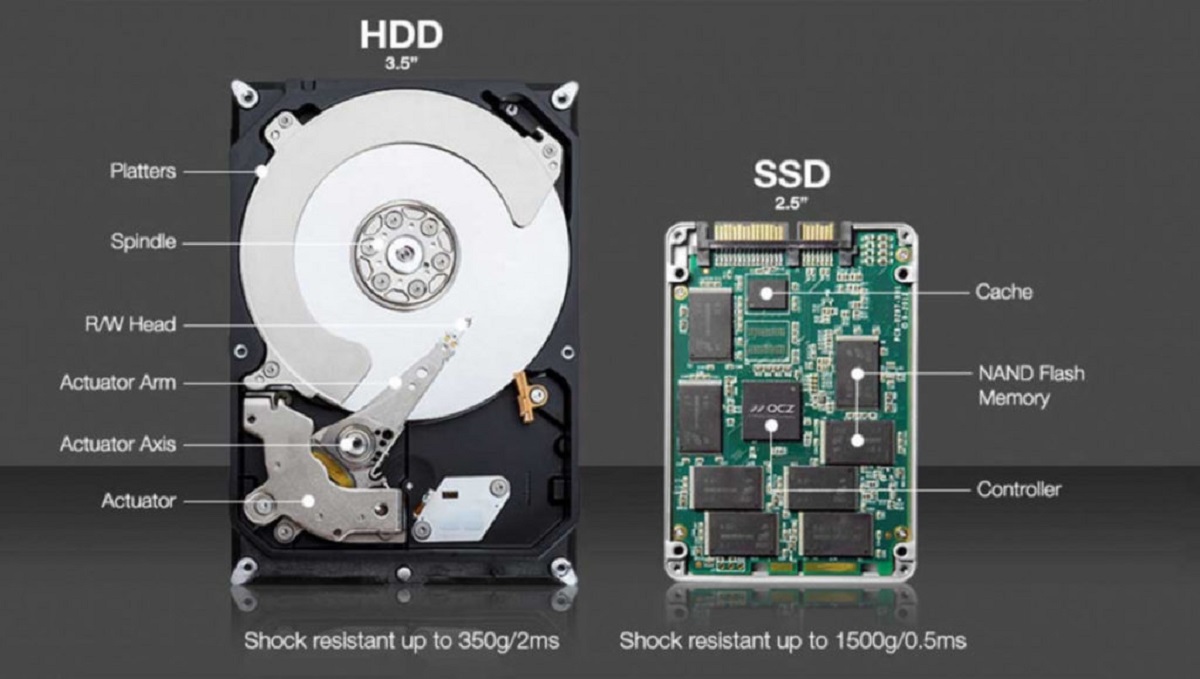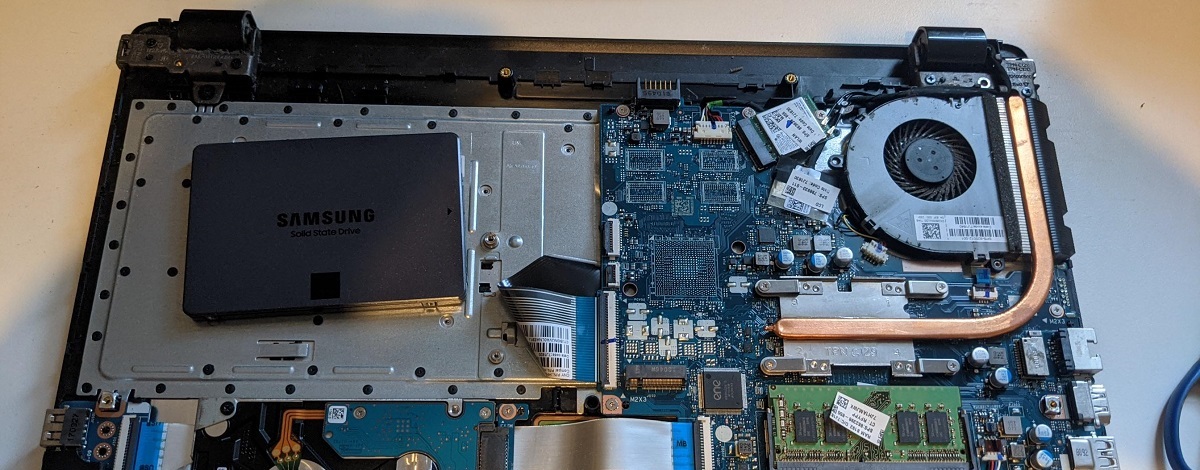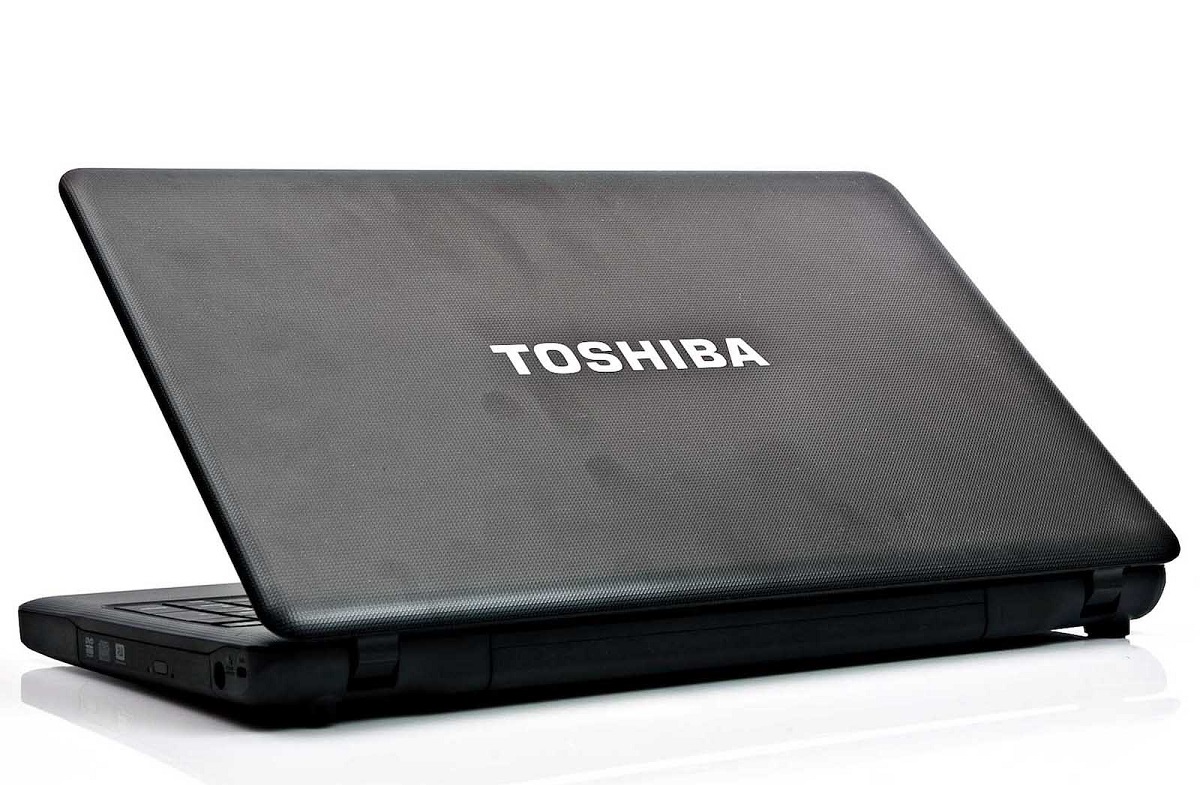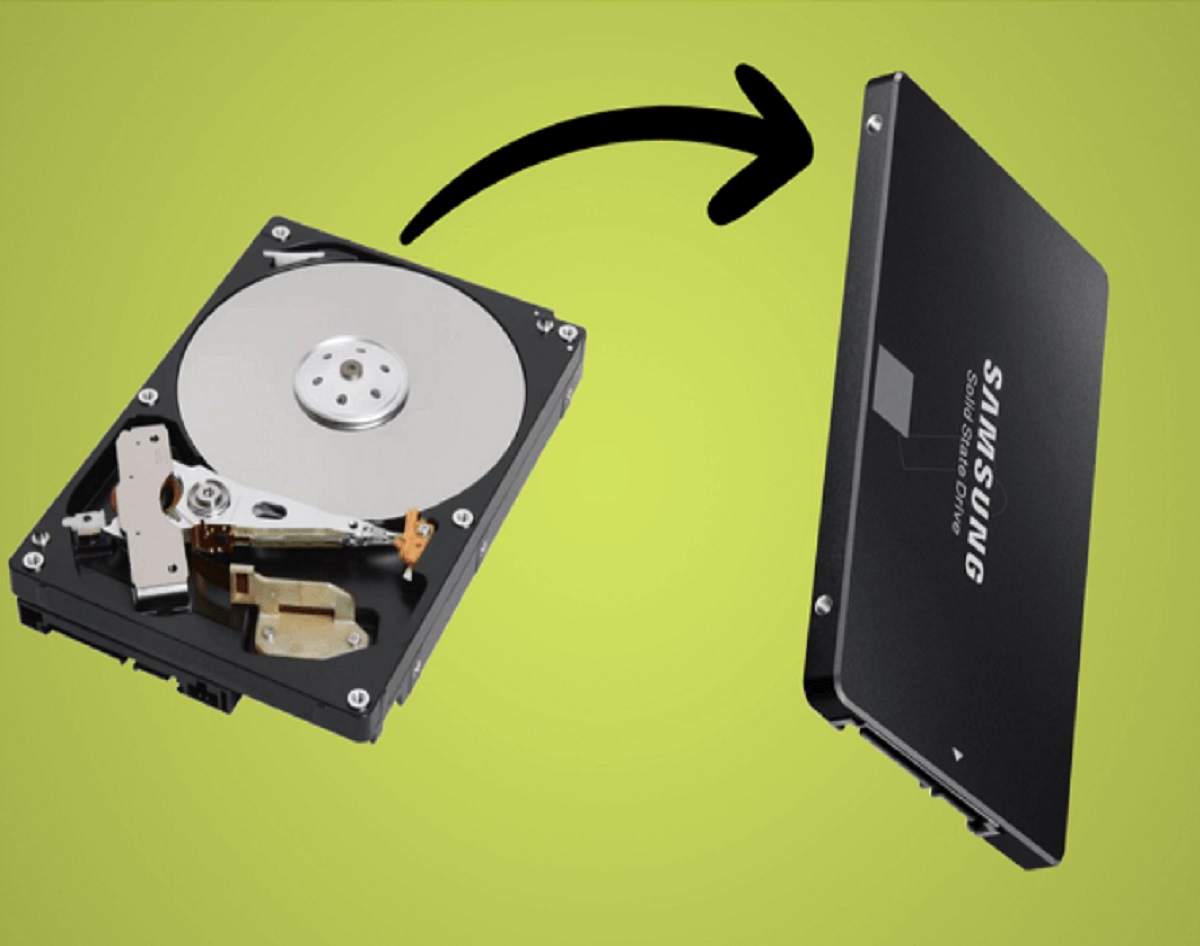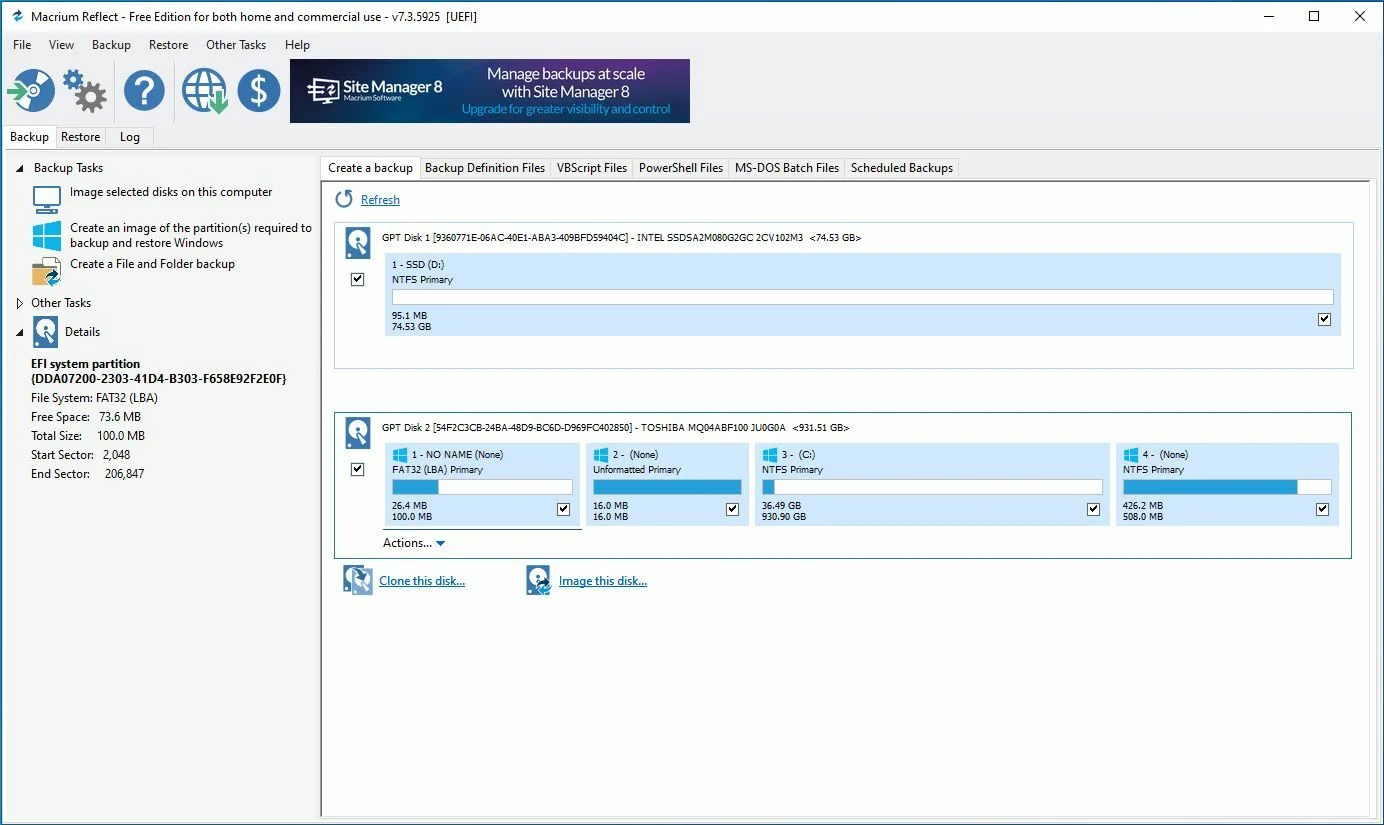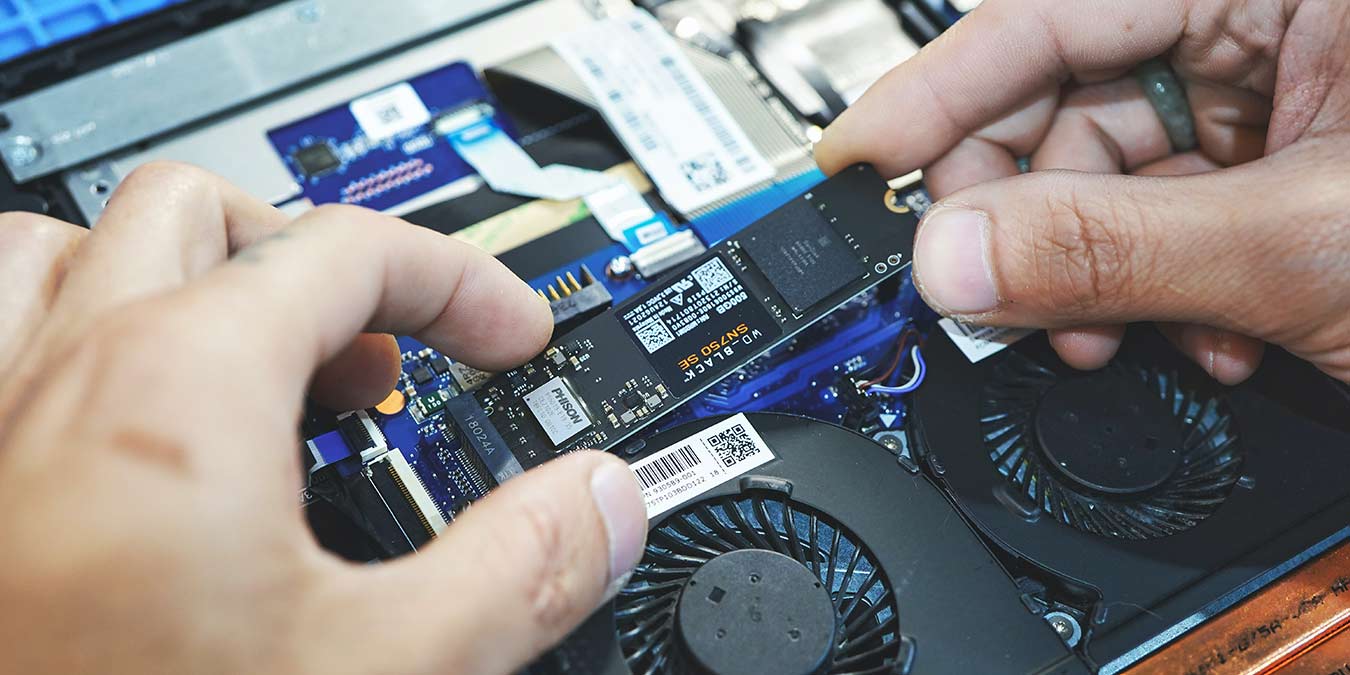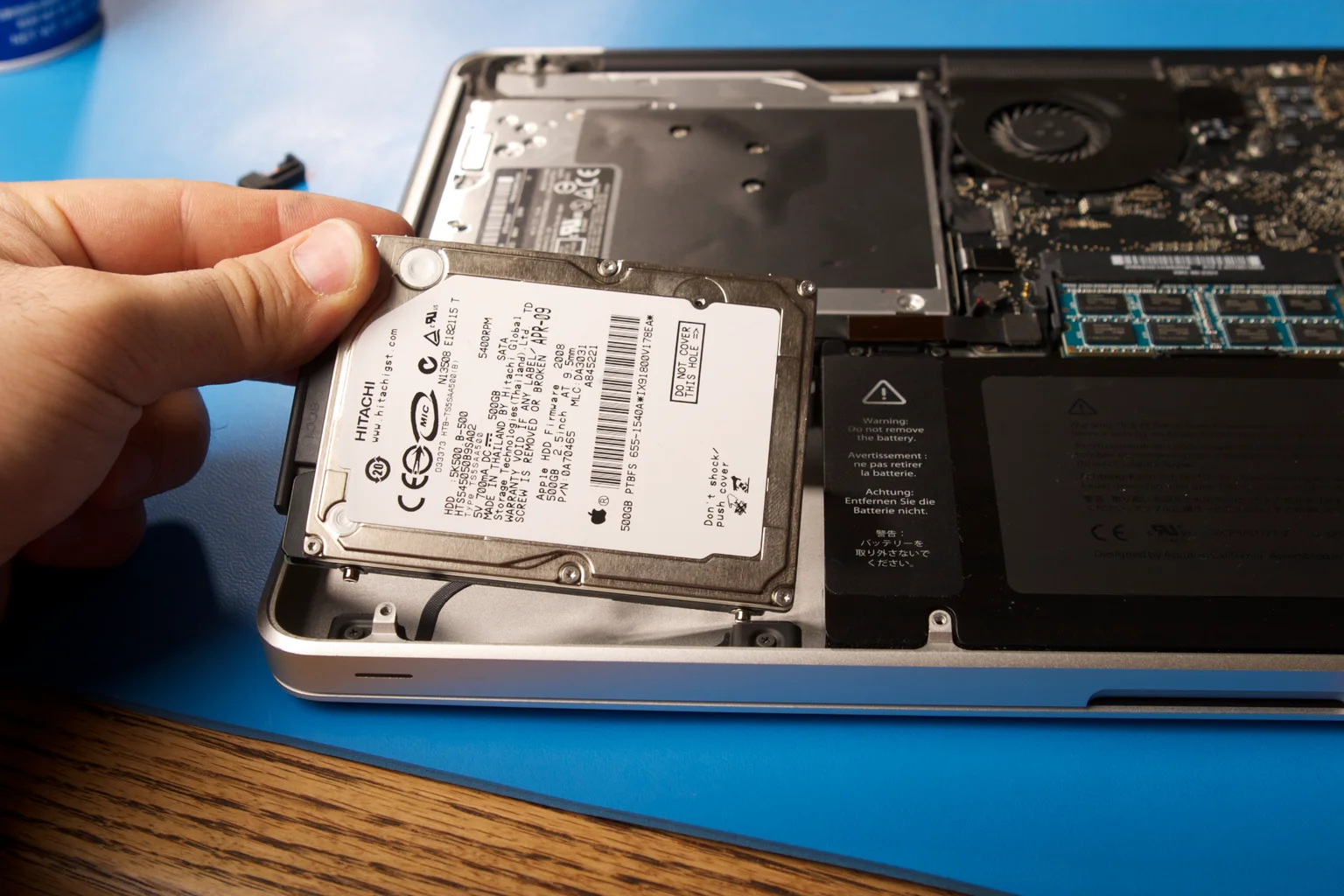Introduction
When it comes to choosing storage for your computer, you are likely to come across two common terms: SSD and HDD. These acronyms stand for Solid State Drive and Hard Disk Drive, respectively. While both options serve the purpose of storing your data, there are significant differences between them that can impact the performance, capacity, power consumption, and cost of your computer.
In this article, we will delve into the details of SSD and HDD to help you understand their differences and make an informed decision based on your needs and preferences. Whether you are building a new computer or upgrading the storage of your existing one, knowing the differences between SSD and HDD can be crucial in ensuring optimal performance and storage capacity.
Let’s explore the physical characteristics, performance variations, capacity differences, power consumption, and cost comparisons of SSDs and HDDs. By the end of this article, you will have a clearer understanding of which storage option best suits your requirements.
What is an SSD?
A Solid State Drive (SSD) is a type of storage device that uses flash memory to store and retrieve data. Unlike traditional Hard Disk Drives (HDDs), which use spinning magnetic disks and moving read/write heads, SSDs have no moving parts. This makes them more durable and less prone to mechanical failures.
SSDs are known for their exceptional speed and performance. They offer significantly faster data transfer rates and access times compared to HDDs. This is because SSDs don’t have to rely on mechanical processes to access data, resulting in virtually instantaneous retrieval of information.
Another advantage of SSDs is their compact size and lightweight design. Since they don’t require bulky spinning disks, they can be much smaller and lighter than HDDs. This makes SSDs a preferred choice for laptops and portable devices where weight and space considerations are important.
Additionally, SSDs consume less power than HDDs. With no moving parts to keep in motion, SSDs require less energy to operate, which can lead to improved battery life for laptops and reduced power consumption for desktop computers.
However, one of the main limitations of SSDs is their relatively higher cost per gigabyte compared to HDDs. This cost factor is gradually decreasing as technology advances and SSDs become more mainstream, but it is still an important consideration when selecting storage options.
In summary, SSDs offer faster speeds, better durability, decreased power consumption, and smaller form factors compared to their HDD counterparts. These advantages make SSDs an excellent choice for users who prioritize performance and reliability.
What is an HDD?
A Hard Disk Drive (HDD) is a traditional storage device that has been widely used for many years. It consists of one or more spinning magnetic disks, also known as platters, and a mechanical arm with read/write heads that move across the surface of the platters to access and store data.
HDDs are known for their large storage capacities at a relatively affordable price. They come in various sizes, ranging from a few hundred gigabytes to several terabytes or more, making them ideal for users who require a lot of storage space.
While HDDs may not match the speed and performance of SSDs, they still offer reasonable data transfer rates and access times. However, due to the mechanical nature of their operation, HDDs are slower compared to SSDs. This is because the read/write heads need to physically move to the correct location on the spinning platters to access the desired data.
One advantage of HDDs is their cost-effectiveness. They are generally less expensive per unit of storage compared to SSDs, making them an attractive choice for users who need high-capacity storage at a reasonable price point.
HDDs are also known for their reliability and long lifespan. With proper care and regular maintenance, HDDs can provide years of dependable storage. However, their mechanical nature makes them susceptible to mechanical failures, such as head crashes or motor failures, which can result in data loss.
In terms of power consumption, HDDs tend to consume more energy than SSDs. This is primarily due to the mechanical components that need to be powered and kept in constant motion. Therefore, if energy efficiency is a concern, SSDs may be a preferable option.
In summary, HDDs offer larger storage capacities at a lower cost compared to SSDs. While they may not match the speed and durability of SSDs, HDDs still provide reliable storage options for users who prioritize affordability and high-capacity storage needs.
Physical Differences
One of the key differences between SSDs and HDDs lies in their physical construction. SSDs, as mentioned earlier, have no moving parts. They are usually built with a circuit board that houses the flash memory chips. The compact and lightweight design of SSDs makes them ideal for portable devices like laptops and tablets where space and weight are important considerations.
On the other hand, HDDs consist of spinning magnetic platters and mechanical read/write heads that move across the surface of these platters. They also contain a motor that spins the platters at a high speed. The mechanical nature of HDDs results in larger physical dimensions and a higher probability of mechanical failures compared to SSDs. As a result, HDDs are typically larger and heavier than SSDs.
The physical differences between SSDs and HDDs also affect their shock resistance and durability. Since SSDs have no moving parts, they are more resistant to physical shocks and vibrations. This means that an SSD is less likely to suffer damage or data loss when subjected to bumps, drops, or other physical impacts. HDDs, on the other hand, are more prone to damage due to their mechanical components and sensitive read/write heads. It’s important to handle HDDs with care and avoid subjecting them to excessive physical shocks.
Furthermore, the physical differences between SSDs and HDDs have an impact on the noise levels when in operation. SSDs produce no noise since there are no moving parts involved. HDDs, on the other hand, can produce noticeable noise due to the spinning platters and movements of the mechanical arm and read/write heads. While this may not be a significant issue for most users, it’s worth considering if you prefer a quieter computing experience.
In summary, SSDs and HDDs differ in their physical construction, with SSDs being smaller, lighter, and more shock-resistant than HDDs. The absence of moving parts in SSDs also results in a noiseless operation. Meanwhile, HDDs are larger and heavier due to their mechanical components but offer larger storage capacities. Understanding these physical differences can help you make an informed decision when choosing between an SSD and an HDD for your storage needs.
Performance Differences
When it comes to performance, SSDs have a clear advantage over HDDs. Due to their lack of moving parts and the use of flash memory technology, SSDs offer significantly faster data transfer rates and access times. This means that tasks such as booting up your computer, launching applications, and loading files can be completed much more quickly with an SSD.
SSDs excel in random access performance, which is crucial for tasks that involve accessing scattered data across different locations on the storage device. Since SSDs can access data almost instantaneously, they outperform HDDs in situations where data needs to be accessed and transferred simultaneously.
HDDs, on the other hand, have slower performance due to their mechanical components. The spinning platters and moving read/write heads require more time to access and transfer data, resulting in longer loading times and slower overall performance.
Another aspect of performance to consider is the impact on multitasking and system responsiveness. With an SSD, you can have multiple applications running simultaneously without experiencing significant slowdowns. This is because SSDs can quickly retrieve and process data, allowing for smooth multitasking. HDDs, on the other hand, may struggle to keep up with demanding multitasking scenarios, leading to slower response times and potential delays.
It’s worth noting that while SSDs have significant performance advantages over HDDs, the actual performance improvement experienced by the user may vary depending on the specific use case and the rest of the system’s hardware. For example, if the processor or RAM is a bottleneck, the benefit of upgrading to an SSD may not be as pronounced.
In summary, SSDs offer superior performance compared to HDDs, delivering faster data transfer rates, quicker access times, and improved multitasking capabilities. The solid-state nature of SSDs eliminates the limitations imposed by mechanical components, providing a noticeable boost in overall system performance.
Capacity Differences
When it comes to storage capacity, HDDs have a significant advantage over SSDs. HDDs are available in larger capacities, ranging from several hundred gigabytes to multiple terabytes. This makes them an ideal option for users who require ample storage space for their files, documents, media, and applications.
On the other hand, SSDs typically come in smaller capacities, especially when considering the price per gigabyte. While SSDs with capacities of several terabytes do exist, they are generally more expensive and less common compared to high-capacity HDDs. This can be a limitation for users who need to store a large amount of data without breaking the bank.
However, it’s important to consider that the available storage capacity of an SSD may not be as crucial as it initially seems. With the proliferation of cloud storage services and external storage options, it has become easier to compensate for the limited capacity of an SSD. Many users opt to store files and data that they do not frequently access on external drives or in the cloud, while keeping the most commonly used files and applications on the SSD for quick access.
Additionally, advancements in technology have led to the development of affordable and high-capacity SSDs, allowing users to enjoy both speedy performance and ample storage space. While SSDs with larger capacities may still be more expensive compared to HDDs, the price difference continues to shrink as SSD technology evolves.
Therefore, the capacity differences between SSDs and HDDs should be considered in the context of your specific storage needs. If you require vast amounts of storage at an affordable price, an HDD might be the better option. However, if you prioritize speed and performance over capacity, an SSD can still provide sufficient storage space, especially when coupled with external or cloud storage solutions.
In summary, HDDs surpass SSDs in terms of storage capacity, offering larger and more affordable options. However, the limited capacity of SSDs can be mitigated through external or cloud storage solutions, making them a viable choice for users who prioritize speed and performance over sheer storage space.
Power Consumption
Power consumption is an important factor to consider when choosing between an SSD and an HDD. In this respect, SSDs have a clear advantage over HDDs.
SSDs consume significantly less power compared to HDDs. Since SSDs have no moving mechanical components, they require less energy to operate. This not only leads to lower power consumption but also results in longer battery life for laptops and less strain on power supplies for desktop computers.
Reduced power consumption is particularly advantageous for portable devices such as laptops, tablets, and smartphones. Longer battery life means more time can be spent on the go without needing to recharge the device. The efficiency of SSDs in terms of power consumption also contributes to lower heat generation, which can help maintain optimal operating temperatures for the system.
HDDs, on the other hand, require more power to operate due to the mechanical components, such as the spinning platters and the read/write heads that need to move. This higher power consumption can result in shorter battery life for laptops and increased electricity costs for desktop computers.
It’s worth noting that the power consumption difference between SSDs and HDDs becomes more apparent during active usage or when transferring large amounts of data. During idle periods, both SSDs and HDDs consume relatively similar amounts of power. However, since the active usage of a storage device tends to be more frequent than idle periods, the lower power consumption of SSDs can have a noticeable impact on overall power efficiency.
In summary, SSDs have a clear advantage over HDDs when it comes to power consumption. They consume less power, leading to longer battery life for portable devices and reduced energy costs for desktop computers. If power efficiency is a concern for you, SSDs are the preferable choice.
Cost Comparison
When comparing the cost of SSDs and HDDs, there are several factors to consider. Historically, SSDs have been more expensive than HDDs, primarily due to the higher cost of flash memory technology. However, over the years, advancements in technology and increased production have contributed to a significant decrease in the price of SSDs.
While SSDs are still generally more expensive than HDDs in terms of price per gigabyte, the cost difference has become less pronounced. In fact, entry-level SSDs with reasonable storage capacities are now more accessible to a wider range of users.
On the other hand, HDDs remain the more affordable option for large-capacity storage. They offer a cost-effective solution, particularly for users who prioritize capacity over speed and performance.
It’s important to determine your storage needs and budget when considering the cost of SSDs and HDDs. If you require a large amount of storage space at a lower cost, an HDD may be the more practical choice. However, if you value the speed and performance benefits of an SSD and can allocate a higher budget, an SSD can provide a noticeable improvement in overall system performance.
Furthermore, it’s important to consider the longevity and reliability aspects when evaluating the cost comparison. SSDs generally have a longer lifespan and tend to be more durable compared to HDDs, reducing the chances of data loss and the need for frequent replacements. This can lead to long-term cost savings, offsetting the initial higher investment of an SSD.
In summary, while HDDs offer a more affordable option for larger storage capacities, the decreasing prices of SSDs have made them a more viable choice for users seeking improved speed and performance. Consider your storage needs, budget, and the longevity benefits when making a cost comparison between SSDs and HDDs.
Which One Should You Choose?
Choosing between an SSD and an HDD ultimately depends on your specific needs, budget, and priorities. To help you make an informed decision, consider the following factors:
1. Speed and Performance: If you prioritize fast boot times, quick file transfers, and responsive multitasking, an SSD is the better choice. SSDs offer significantly faster data transfer rates and access times, resulting in a snappier computing experience.
2. Storage Capacity: If you require a large amount of storage space at an affordable price, an HDD is the more practical option. HDDs offer larger capacities, making them suitable for users who need ample storage for their files, applications, and media.
3. Power Consumption: If power efficiency is important to you, especially for portable devices, SSDs have the advantage. They consume less power, leading to longer battery life and reduced electricity costs.
4. Durability and Reliability: SSDs have no moving parts, making them more resistant to physical shocks and less susceptible to mechanical failures. They also tend to have a longer lifespan compared to HDDs, which can result in long-term cost savings and reduced data loss risks.
5. Budget: Consider your budget when evaluating the cost comparison between SSDs and HDDs. While SSDs are generally more expensive, the prices have decreased over time, making them more accessible. HDDs, on the other hand, offer a more affordable option for larger storage capacities.
It’s important to keep in mind that compromises may be necessary depending on your specific needs and priorities. Some users may choose to combine both SSD and HDD storage in their systems, using an SSD for the operating system and frequently used applications, while using an HDD for mass storage.
To make the best decision, carefully evaluate your requirements, consider the advantages and limitations of each storage option, and strike a balance between performance, capacity, cost, and longevity.
Conclusion
Choosing between an SSD and an HDD involves weighing several factors, including speed, capacity, power consumption, durability, and cost. While SSDs offer faster speeds, better durability, lower power consumption, and compact designs, HDDs provide larger storage capacities at a more affordable price.
If you prioritize speed, performance, and quick data access, an SSD is the ideal choice. SSDs excel in tasks that require fast boot times, quick file transfers, and seamless multitasking. Additionally, their lower power consumption makes them suitable for portable devices and energy-efficient systems.
On the other hand, if high-capacity storage at a lower cost is your main consideration, an HDD is the more practical option. HDDs offer larger storage capacities, making them suitable for users who require ample space for their files, applications, and media.
It’s worth noting that using a combination of both SSD and HDD storage can provide the best of both worlds. Storing the operating system, frequently used applications, and critical files on an SSD can deliver a significant boost in speed and performance, while using an HDD for mass storage can offer cost-effective storage solutions.
In the end, the choice between an SSD and an HDD depends on your specific needs, budget, and priorities. Assess your requirements and consider the benefits and limitations of each storage option to make an informed decision. By understanding the differences between SSDs and HDDs, you can select the storage option that best meets your needs and enhances your computing experience.







